Abstract
Using trypanosomes labelled with [75Se]-methionine a series of experiments was conducted to investigate antibody production in mice with acute fulminating T. brucei infections. As measured by the hepatic uptake of radiolabelled parasites, we were unable to demonstrate any evidence of antibody-mediated uptake by the liver in such mice. It was concluded that this was not due to impaired macrophage function but was caused by the inability of antibody production to cope with the massive parasitaemias produced by rapidly-replicating infections so that effective opsonization of the parasites did not occur. In contrast, a train of trypanosome which causes a more chronic infection, although initially having a similar replication, although initially having a similar replication rate, subsequently switched t a slower one and thereby allowed antibody to reach levels which permitted effective opsonization. There was no evidence that the parasite caused any significant suppression of antibody responses in these acute infections since inoculation with trypanosomes of one stock at the same time as vaccination with irradiated organisms of a second stock did not prevent the development of antibody to the latter, as measured by the hepatic uptake of radiolabelled parasites.
Full text
PDF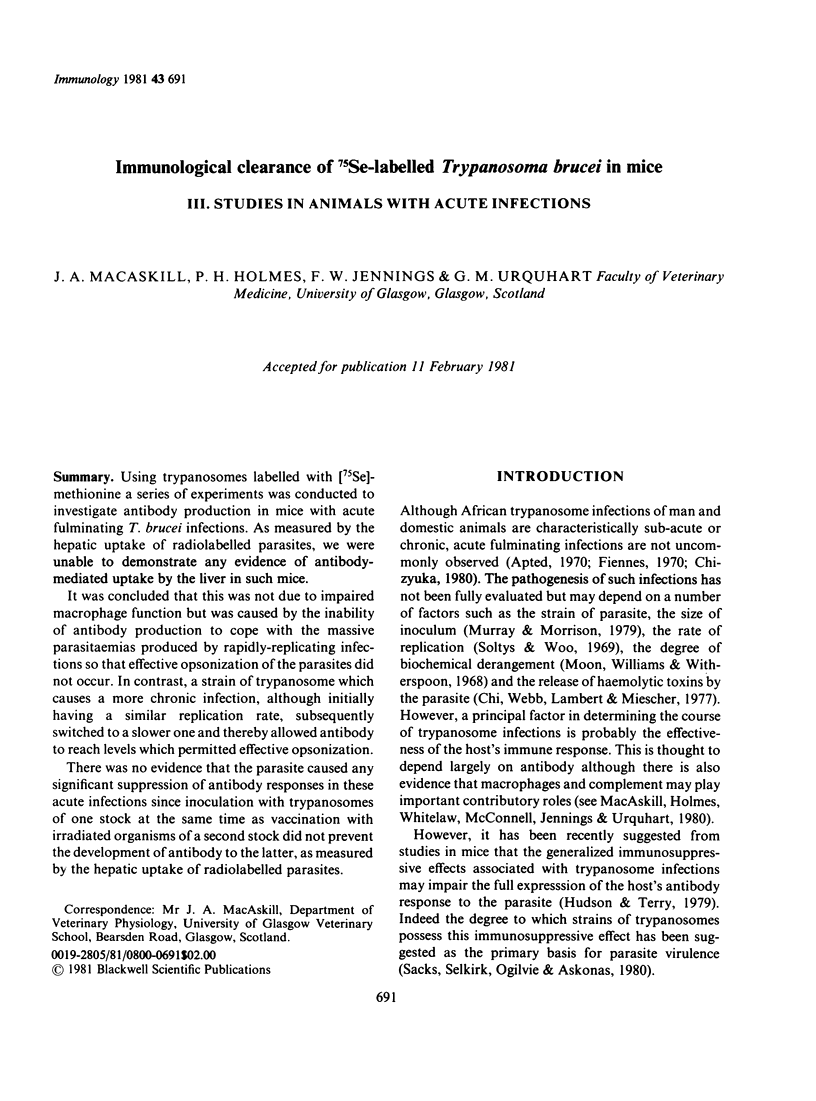
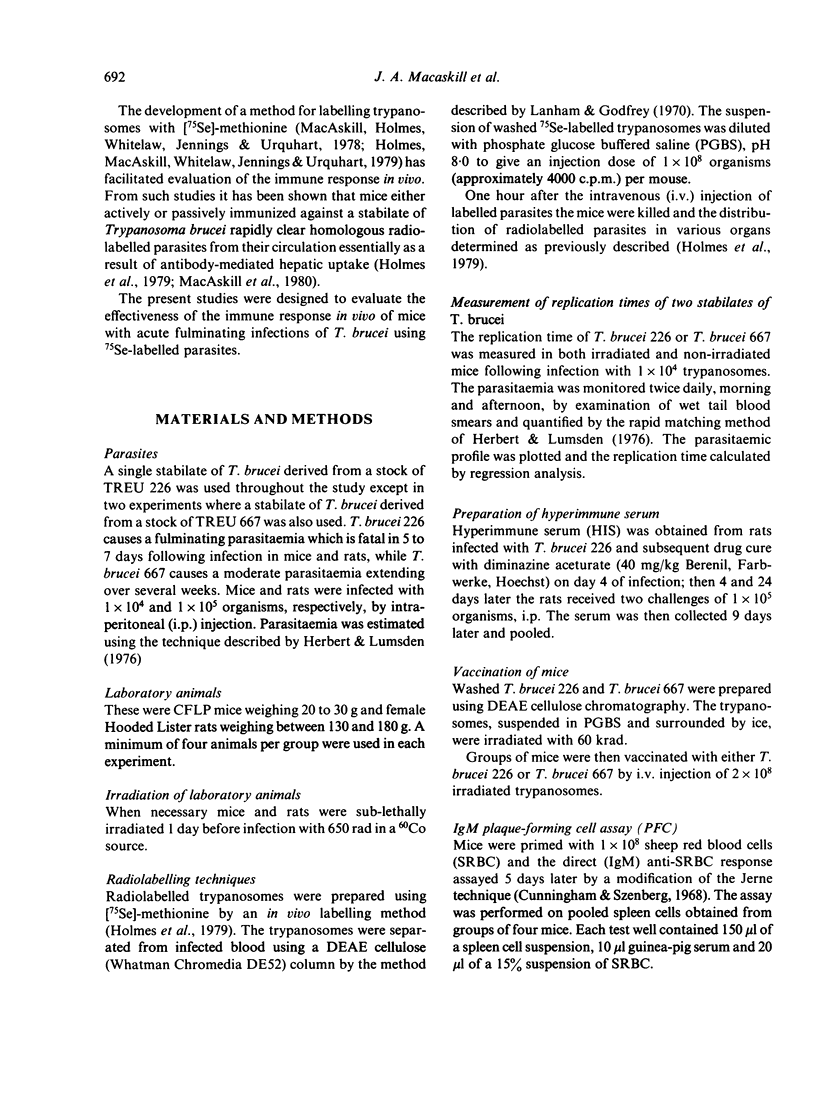
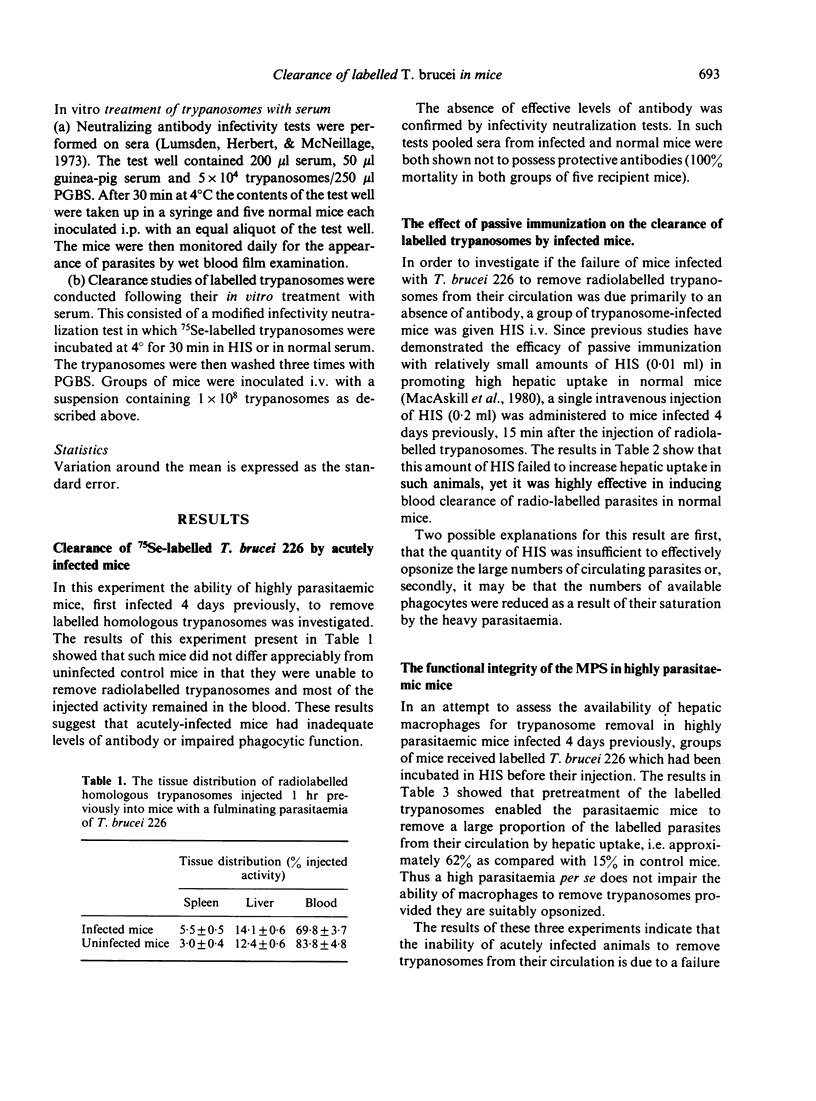
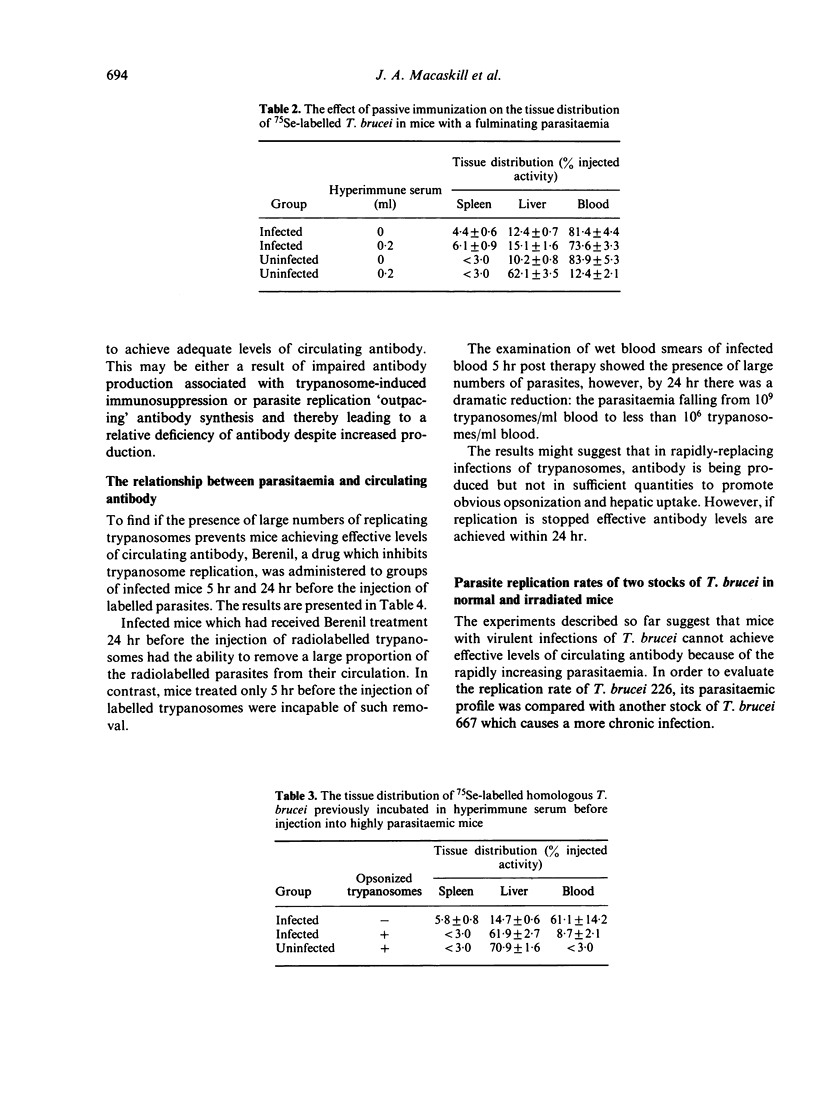
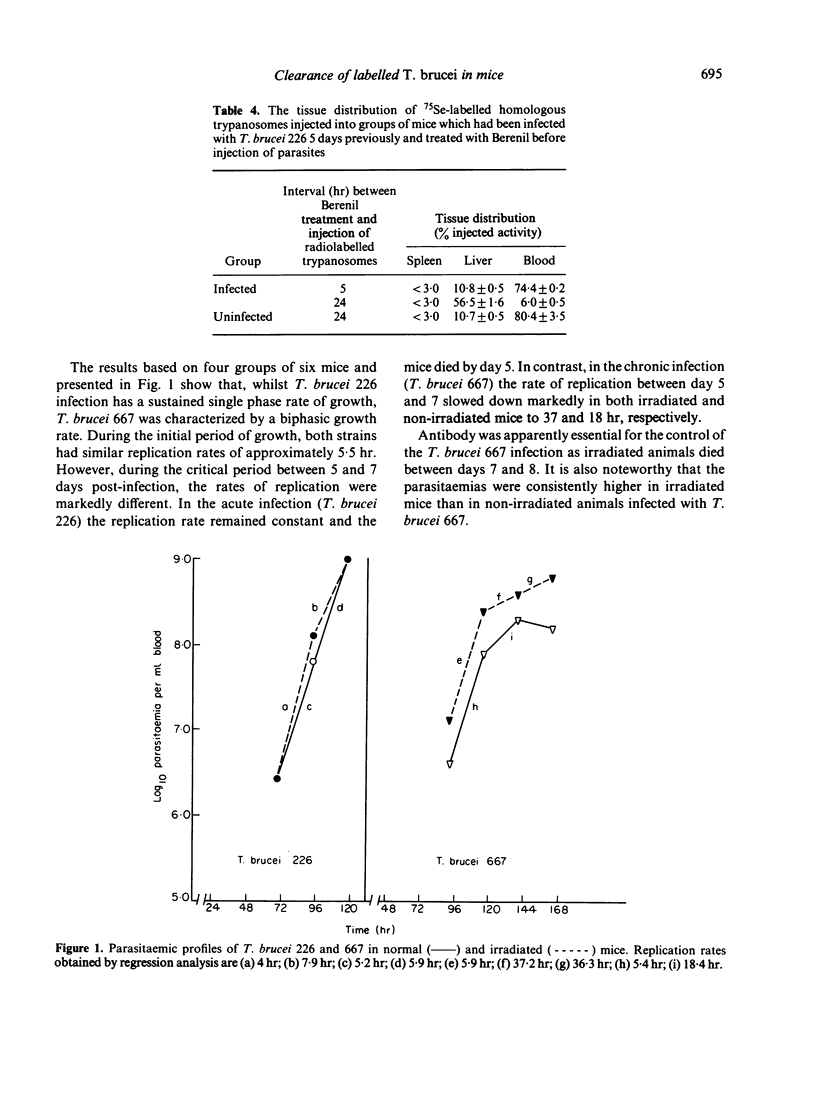
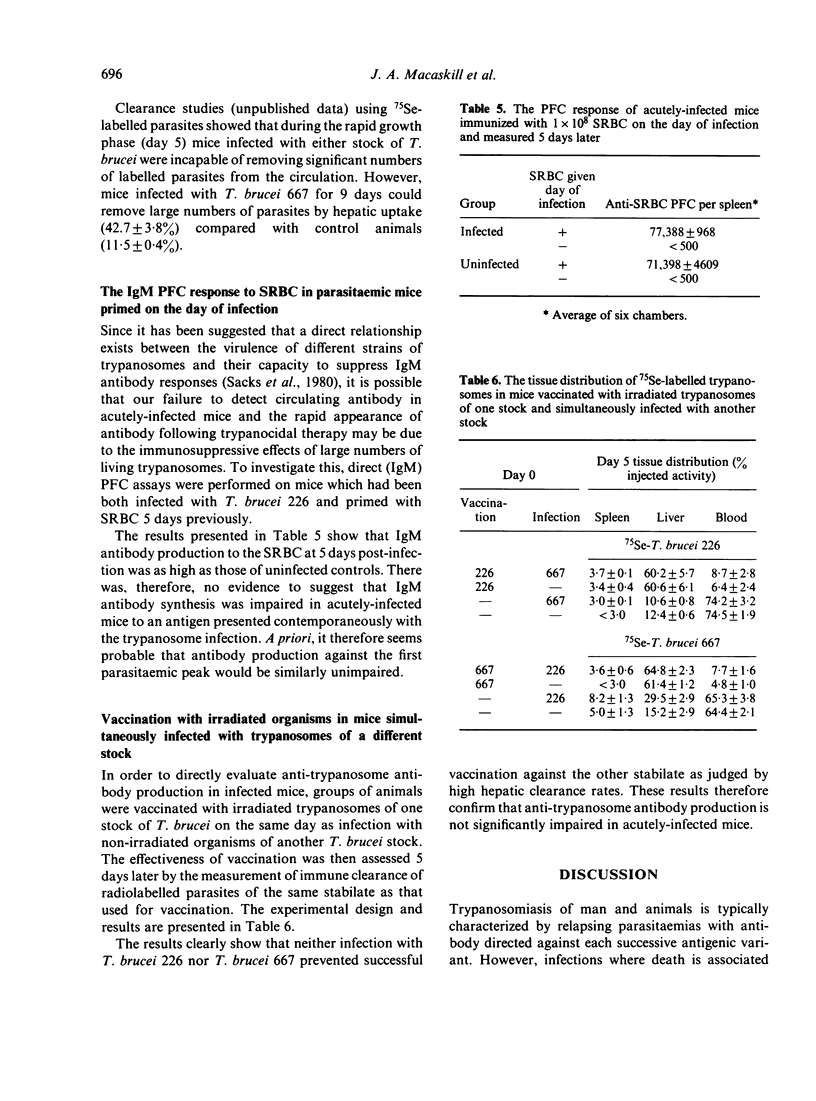
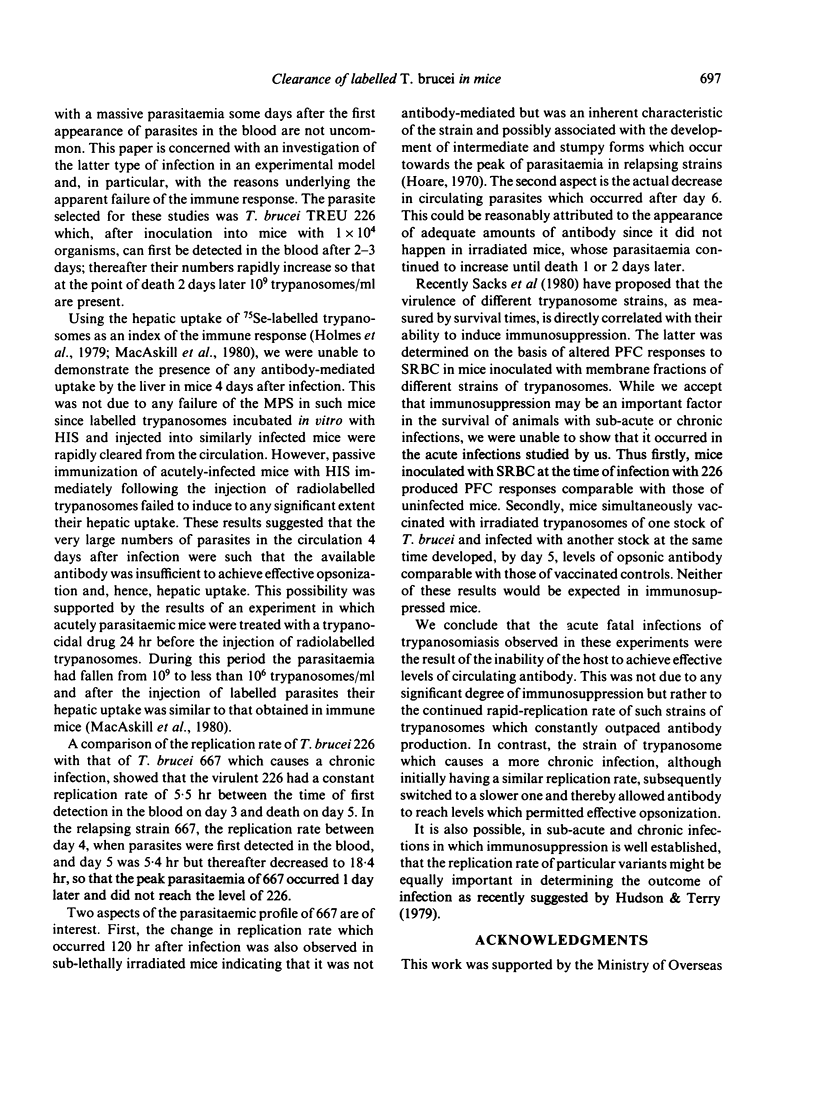

Selected References
These references are in PubMed. This may not be the complete list of references from this article.
- Cunningham A. J., Szenberg A. Further improvements in the plaque technique for detecting single antibody-forming cells. Immunology. 1968 Apr;14(4):599–600. [PMC free article] [PubMed] [Google Scholar]
- Herbert W. J., Lumsden W. H. Trypanosoma brucei: a rapid "matching" method for estimating the host's parasitemia. Exp Parasitol. 1976 Dec;40(3):427–431. doi: 10.1016/0014-4894(76)90110-7. [DOI] [PubMed] [Google Scholar]
- Holmes P. H., MacAskill J. A., Whitelaw D. D., Jennings F. W., Urquhart G. M. Immunological clearance of 75Se-labelled Trypanosoma brucei in mice. I. Aspects of the radiolabelling technique. Immunology. 1979 Mar;36(3):415–420. [PMC free article] [PubMed] [Google Scholar]
- Hudson K. M., Terry R. J. Immunodepression and the course of infection of a chronic Trypanosoma brucei infection in mice. Parasite Immunol. 1979 Winter;1(4):317–326. doi: 10.1111/j.1365-3024.1979.tb00717.x. [DOI] [PubMed] [Google Scholar]
- Lanham S. M., Godfrey D. G. Isolation of salivarian trypanosomes from man and other mammals using DEAE-cellulose. Exp Parasitol. 1970 Dec;28(3):521–534. doi: 10.1016/0014-4894(70)90120-7. [DOI] [PubMed] [Google Scholar]
- Macaskill J. A., Holmes P. H., Whitelaw D. D., McConnell I., Jennings F. W., Urquhart G. M. Immunological clearance of 75Se-labelled Trypanosoma brucei in mice. II. Mechanisms in immune animals. Immunology. 1980 Aug;40(4):629–635. [PMC free article] [PubMed] [Google Scholar]
- Moon A. P., Williams J. S., Witherspoon C. Serum biochemical changes in mice infected with Trypanosoma rhodesiense and Trypanosoma duttoni. Exp Parasitol. 1968 Feb;22(1):112–121. doi: 10.1016/0014-4894(68)90084-2. [DOI] [PubMed] [Google Scholar]
- Sacks D. L., Selkirk M., Ogilvie B. M., Askonas B. A. Intrinsic immunosuppressive activity of different trypanosome strains varies with parasite virulence. Nature. 1980 Jan 31;283(5746):476–478. doi: 10.1038/283476a0. [DOI] [PubMed] [Google Scholar]
- Soltys M. A., Woo P. Multiplication of Trypanosoma brucei and Trypanosoma congolense in vertebrate hosts. Trans R Soc Trop Med Hyg. 1969;63(4):490–494. doi: 10.1016/0035-9203(69)90037-6. [DOI] [PubMed] [Google Scholar]


